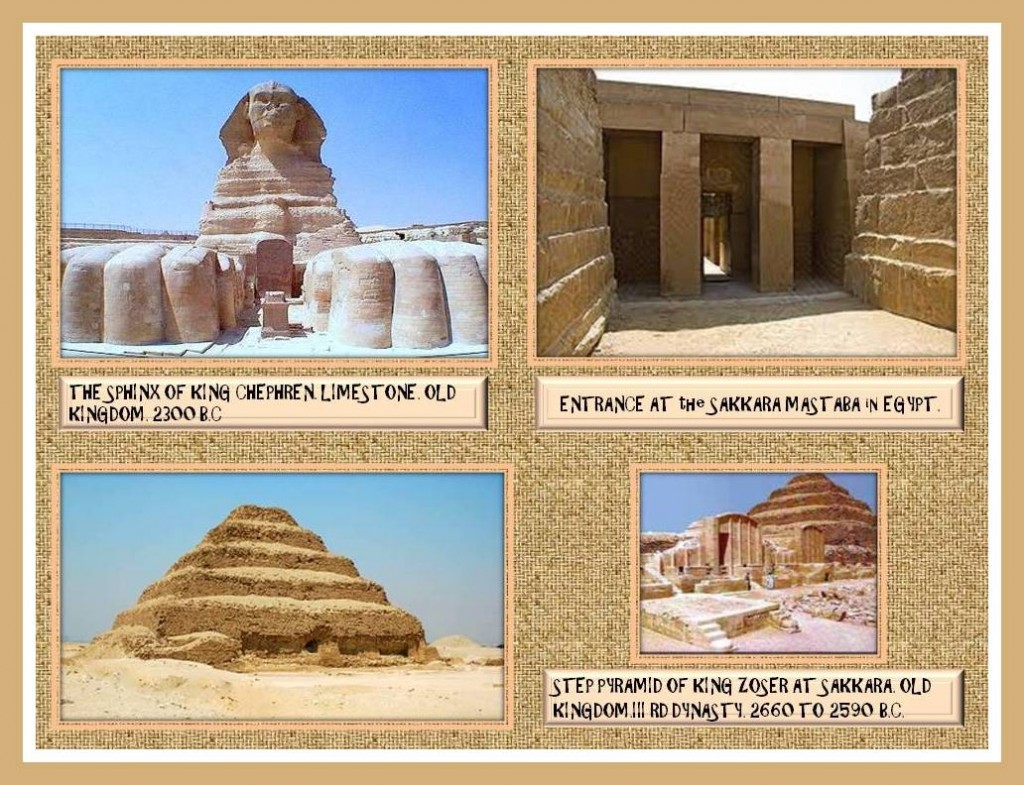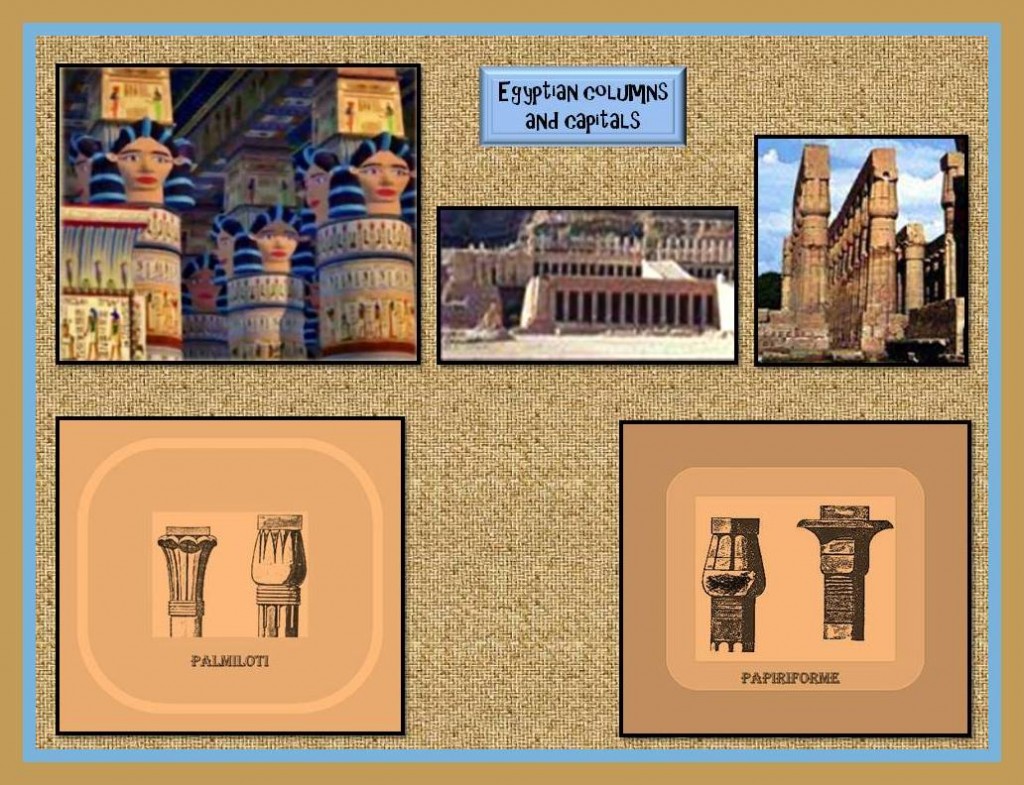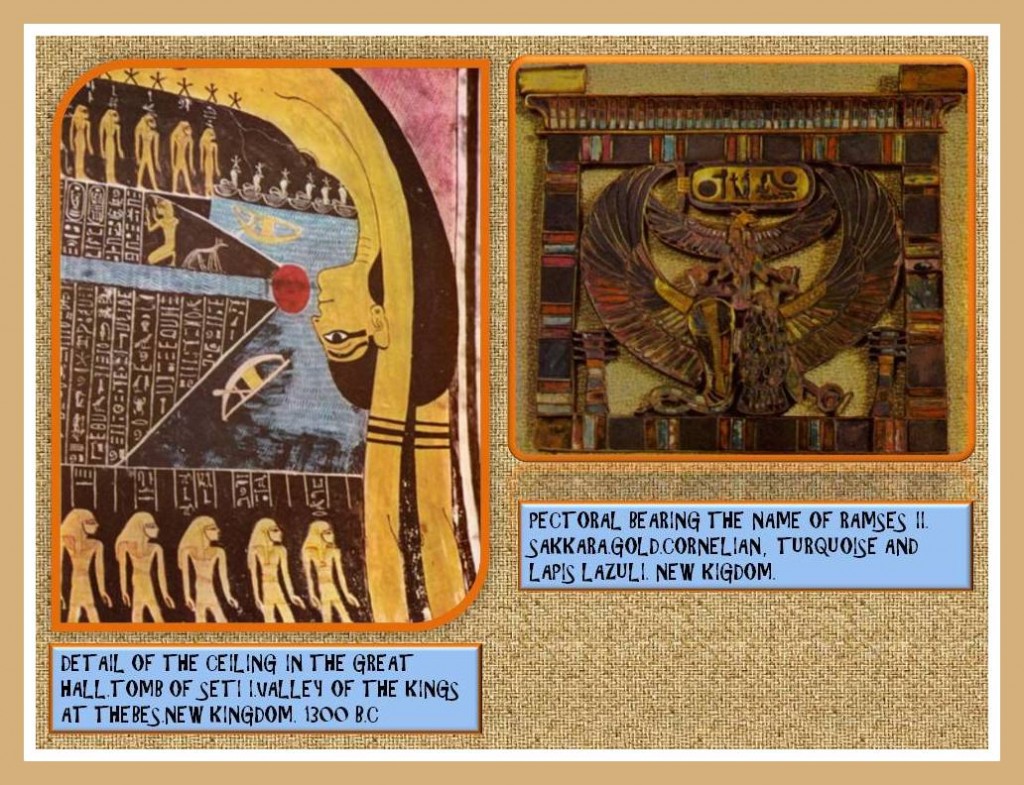Architecture of the ancient Egypt

Nobody knows for sure who built the pyramids of Egypt, recent data and deeper studies suggest that they are very old dating, even thousands of years than officially Egyptologists and archaeologists have pointed out and such is the case of the Gisah Pyramid. In other pyramids they have even not found hieroglyphs, mummies, organic material or indications about who were the builders of the piramids in Egypt. In these cases even the construction date can not be determine accurately.
The theory about these pyramids in specific; who by the way are perfectly oriented with the constellation Orion and use the number 3.14 known as “The Golden Ratio” in its construction, could possible been made by primitive Egyptians is a non sense. The Piramid of Gisah even existed before the pharaohs times for instances if difficult to believe they were only tombs. This theory is not in my opinion been neither logical or crediblel. I present the official version but in my opinion it is wrong.
Many more studies and discoveries will clarify this issue. Some discoveries yet undisclosed; for reasons beyond my sense of logic, can proof who is right and who actually built the pyramids of Egypt and the rest of the pyramids on the planet. Luckily no truth remains hidden under the sun for long and rather sooner than latter we all will know.
As I said, the official version of Egyptologists and historians indicates that:
The ancient Egyptians used simple; yet powerful tools. Its architects designed the building of these large structures of stone with accuracy and precision. The masters of works directed supervised rigorously the multitude of workers and the constructive details to ensure that they comply with the levels expected and in accordance with the request of those who charge such works.
The important structures in the architecture of the ancient Egypt such as temples and tombs were built of stone instead of bricks to ensure its durability. Pure geometric forms are used in the architecture making it easy for them to shape construction project adapted to stone the most commonly used material.
The mastaba:
The kings used to be buried in the tombs and mastabas before starting to use the pyramids. The Mastaba was the oldest tomb style known in Egypt. In the old Kingdom was a rectangular structure roofed flat; Adobe or stone with an underground burial chamber.
The tomb is usually composed of two distinct parts: the Chapel and the crypt. The walls of the Funeral Chapel; which were much decorated staying a backdoor as a way of symbol linking the living with the dead.
They also placed a carved image of the owner of the Tomb. The main hall was flanked by several smaller rooms which were the provisions of the deceased containing furniture, offers, sacred text, victuals, etc. They wanted to ensure that the deceased had at its disposal the necessary on their way to the “life after death”.
The pyramids:
Were built during the old and middle kingdoms, but the rulers later abandoned this style for rock cut tombs which were less distinguished but much more affordable in the economic aspect as far as the cost of materials and the realization refers. The first we could be regarded as a true pyramid was built at Sakkara for King Djoser. It was called “Step pyramid” because of its shape resembling steps.

The pyramids to be built later were built with their four smooth faces and began to be building in the 4th dynasty. This is the case of the great pyramid of Giza, built by King Cheops about 4,500 years ago and one of the most famously known.
The distribution of the pyramids consisted with lounges closed; with slab floors and the roof supported by columns. In many cases both these as the walls were decorated with reliefs and paintings with hieroglyphs; which consisted of a passage or story; in which where narrated events related to religion or with reference to the life of the Pharaohs and their family as well as the deceased himself.

Men worked the block of granite to chisel, and although it was a task brutally hard under a burning sun; It should be made with caution as these blocks should have a specific form and should be outlined in such a way that they fit perfectly with the rest of the blocks. Architects and supervisors stonemasons used special rods to check that the block of stone was cut with precision.
The blocks were left in the excavation until the season of floods which allow to use barcasses (embarkations) to move them until near the pyramids; where were rising by artfully assembled ramps that facilitated them the work to assemble one block on another using strings and levers to place them in the perfect position.
Once all the blocks of granite were placed in its place and checking their quality of production and Assembly; workers rubbed the blocks with casing and polishing them until they sparkled. Supervisors used sinkers to check that the angle of the slope was correct. Everything should be perfect as they had been charge by the client (Church/State/Pharaoh).
The Egyptians temples:
The temples were the buildings which mainly carried out official propaganda more effectively, was of course considered the home of the gods and where the Egyptians met to honor their deities and perform rites where begged for the intersection of the Gods, so that they ensure good climatic conditions that encouraged the crops to grow and also cultivation success.
The temple was created as a copy in stone of what was done before in wood. The oldest temple the “Djoser” was dedicated to Ra in Abusir.
However the classical temple with all its elements was born in the new Kingdom.
It was the duty of the Pharaoh to take care of worship and the maintenance of these temples; so he don’t limited the resources that need to be use; and nether the best construction materials and all necessary man labor that must be addressed and whatever it takes, to keep the gods happy and faithful.
Access to the temple was hierarchical; each social class could enter only up to a certain place. The population was generally excluded from participating in these ceremonies conducted by religious priest, Pharaoh or their representatives, even had parts of the temple considered sacred where it was strictly forbidden to enter. However the Egyptians of all classes attended worship in areas where were allowed.

The sanctuary was the place for cult the image of the gods and occurred that the salons were eventually increasing in size to evolve and become large buildings made of stone. This evolution of the temples that became in a monumental worship place occurs at the time of the new Kingdom.
Over time these temples suffered not only natural deterioration but the consequence of persecution of faith, the conquest of Rome and economic problems and negligence, as well as vandalism and theft of his sculptures and treasures. They persist today thou, over a dozen of them are visited annually by thousands of people as tourists.
Civilian buildings
Both domestic dwellings of the elite and the rest of the Egyptians were built with short durability materials; such as bricks of mud and wood. The lack of trees in this region what added to the fact of why they were less used due to the difficulties of obtaining it. These constructions with these types of materials don’t last sufficiently because of the conditions of the arid desert.
The peasants lived in simple houses, in which of course there was no floor slabs or large columns they were made of mud bricks, while the palaces of the elite were more elaborate structures and with better materials. A few are still standing as tangible testimony of ancient Egyptian architecture.
Among these we can mention the Bad kata and Amarna palaces; they show richly decorated walls and floors showing scenes with figures, as well as other topics as of birds and geometric designs.





